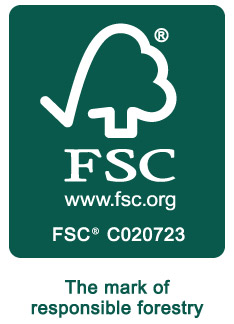Our Full Commitment
Printing is magic.
Trees are converted into an expression of information, commerce and art. Printing helps us to communicate ideas. It carries our products to market. It tells us what is going on in the world. But it can be misused and be very destructive to the environment.
It shares our vision for how to make the world a better place.
A powerful tool.
Because it is such a powerful tool it has been misused, wasting precious resources and putting our forests at risk. Not only are we threatening our forests and our watersheds but we are generating waste at a rate that is hard to imagine.
Sustainability and print can only be accomplished by addressing the issue on many fronts:
- Our forests are special. Use printing wisely. When designing packaging, think simple. Cut down on unnecessary waste. When printing a book, consider your choice of paper. Consider shorter runs or “just in time” print models. Check your mailing list to make
sure that people on it want to receive your publication. Give people ways to choose between receiving your publication in print, electronically or opting out. Target your audience to make sure that your printing is received by those who want it.
- Use papers that come from well managed forests.
- Use papers that have recycled content, cutting down waste that goes to the landfill.
- Choose vendors that have clearly articulated strategies that make them part of the solution, not the problem.

Responsible Partnership
Since 2004 we have partnered with Trees For The Future to restore trees in countries where damage from harmful human activities and extreme climate changes have contributed to the global warming. Community Printers plants seedlings worldwide, replacing our paper consumption. TFTF is also changing thousands of lifes, feeding families in Africa.
Trees planted worldwide by Community Printers since 2004
Tons of paper generated by Community Printers since 2004
Total US dollars donated by Community Printers since 2004
 Forest Stewardship Council®.
Forest Stewardship Council®.
The Forest Stewardship Council maintains a certification program that tracks the use of wood products from the forest to the consumer by maintaining a chain of custody along every step of the manufacturing process. Community Printers is FSC®-certified. The FSC logo on your project tells everyone that the paper was harvested from sustainable sources. FSC-certified paper and use of the FSC logo is available upon request.
The sustainability section of our website is meant to share with you, other printers and print buyers the kinds of things that can be done to lessen our footprint on the environment. Please share your thoughts and ideas with us. We are committed to continually improving our sustainability efforts.
Sustainability extends beyond the use of pulp and paper.
The printing process needs to be more friendly for the environment. Vegetable oil based inks, lower energy use in the manufacturing process, eliminating toxic chemistry from the print process are some of the steps that Community Printers is taking to make us the greenest printer that we can be.
The sustainability section of our website is meant to share with you, other printers and print buyers the kinds of things that can be done to lessen our footprint on the environment. Please share your thoughts and ideas with us. We are committed to continually improving our sustainability efforts.
Paper choices: Recycled, FSC®, Green-e and more.
When Community Printers first started thinking about sustainability and paper choices, there were no recycled papers on the market with post-consumer waste. You could not find paper certified as coming from sustainable sources. Dioxin was the primary method of bleaching papers and it was polluting our nation’s waterways. Curbside recycling existed in the imagination of a few environmentalists who were definitely on the outside.
Today there is a dizzying array of choices of paper made to minimize our impact on the environment. In fact that there are now so many choices that it is hard to know what to use. The truth is that there is no one “right” solution. We have created a matrix to help us navigate the paper choices available. This matrix looks at various environmental characteristics of different papers available locally and gives them points. The higher the score, the more sustainable the paper choice. Please note that we also give a letter grade for availability.
Here are the criteria that we weigh in determining the sustainability of a particular paper:
- Recycled Content
- Foreign vs. Domestic Sources
- Sustainable Sources of Fiber
- Green-e Energy
- Avaliability of Paper
Yes! We recycle everything!
Paper. We fill a 40′ tractor/trailer rig once a week with our waste paper. There is no doubt about it. Printers generate a lot of waste. The sheets we use to set up the press, the trim that comes off the side of a book when we bind it, the corrugated cartons that paper is shipped to us in is all recycled back into paper for us to use again in the future.
Ink. Our left over ink is used to pave California streets. You heard us right, it is converted to asphalt.
Plates. Our printing plates are made of Aluminum. We collect them and several times a year recycle them. We used to also recycle the chemistry from our plate making process but have converted to a new technology that only requires water and a little bit of gum arabic to process our plates. This is another example where researching new technologies led to a cleaner process and a better quality print product. The plates and the plate imager are both products of Agfa Corporation®.
Plastics. Everyday pallets of paper are sent to us shrink wrapped and plastic banded to protect the load in transit. We collect all that plastic and recycle it. We use biodegradable pallet wrap material at Community Printers so if someone is not as conscientious and the plastic ends up in the land fill it will break down. We are trying to find a source for biodegradable shrink wrap material for our shrink wrap machines. We are still working on that but we have added a paper banding machine so that we can eliminate plastic altogether for many jobs requiring bundling.
We even recycle old buildings. We were looking at replacing a dilapidated storage shed behind Community Printers that had no foundation and was falling down. The replacement building would have cost us well over a million dollars. We met with builders who told us the structure was sound but that the foundation was failing. We lifted the building, poured a new foundation, put in new air tight windows, doors, insulation and all for 1/10th of the price. The 75 year old redwood timber has at least another 100 years of life to it.
Sustainability is as much about attitude as anything else.